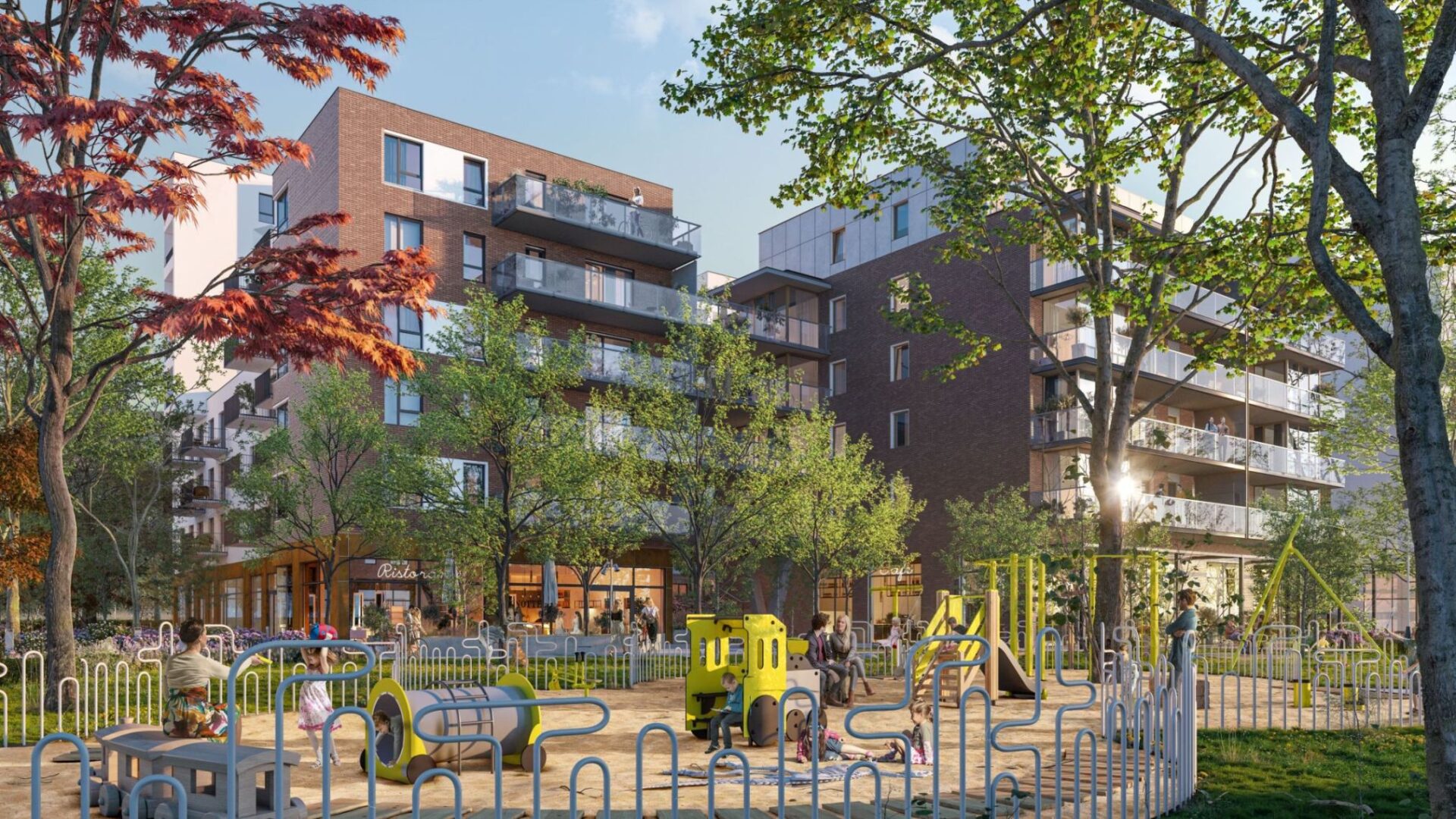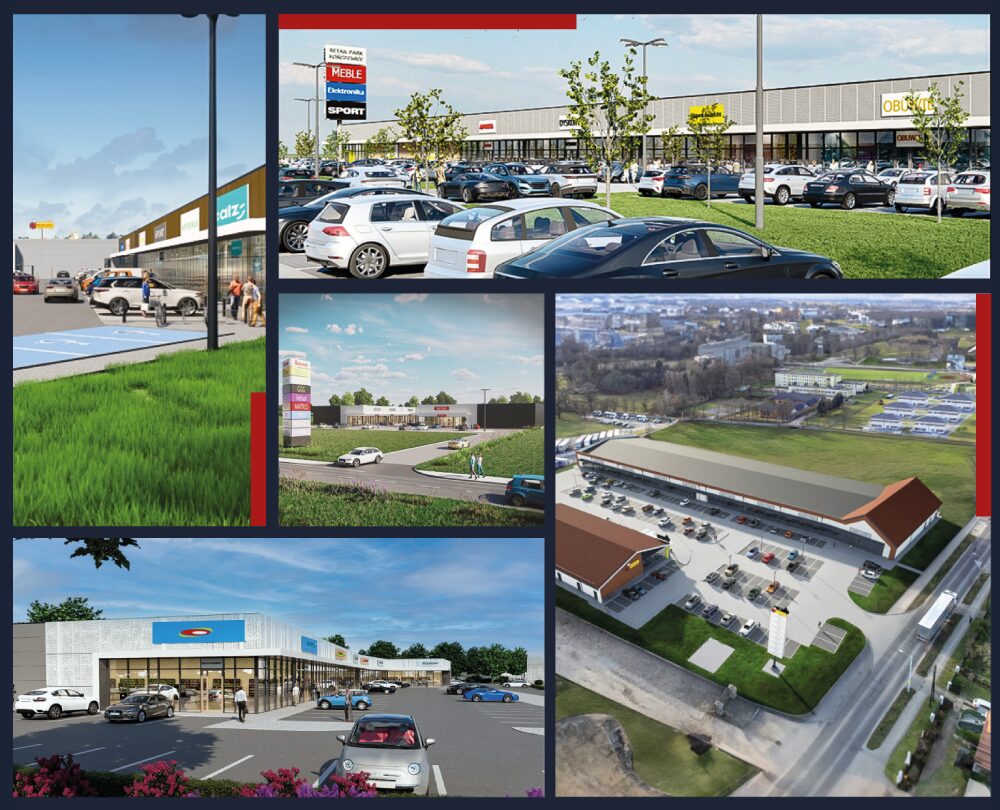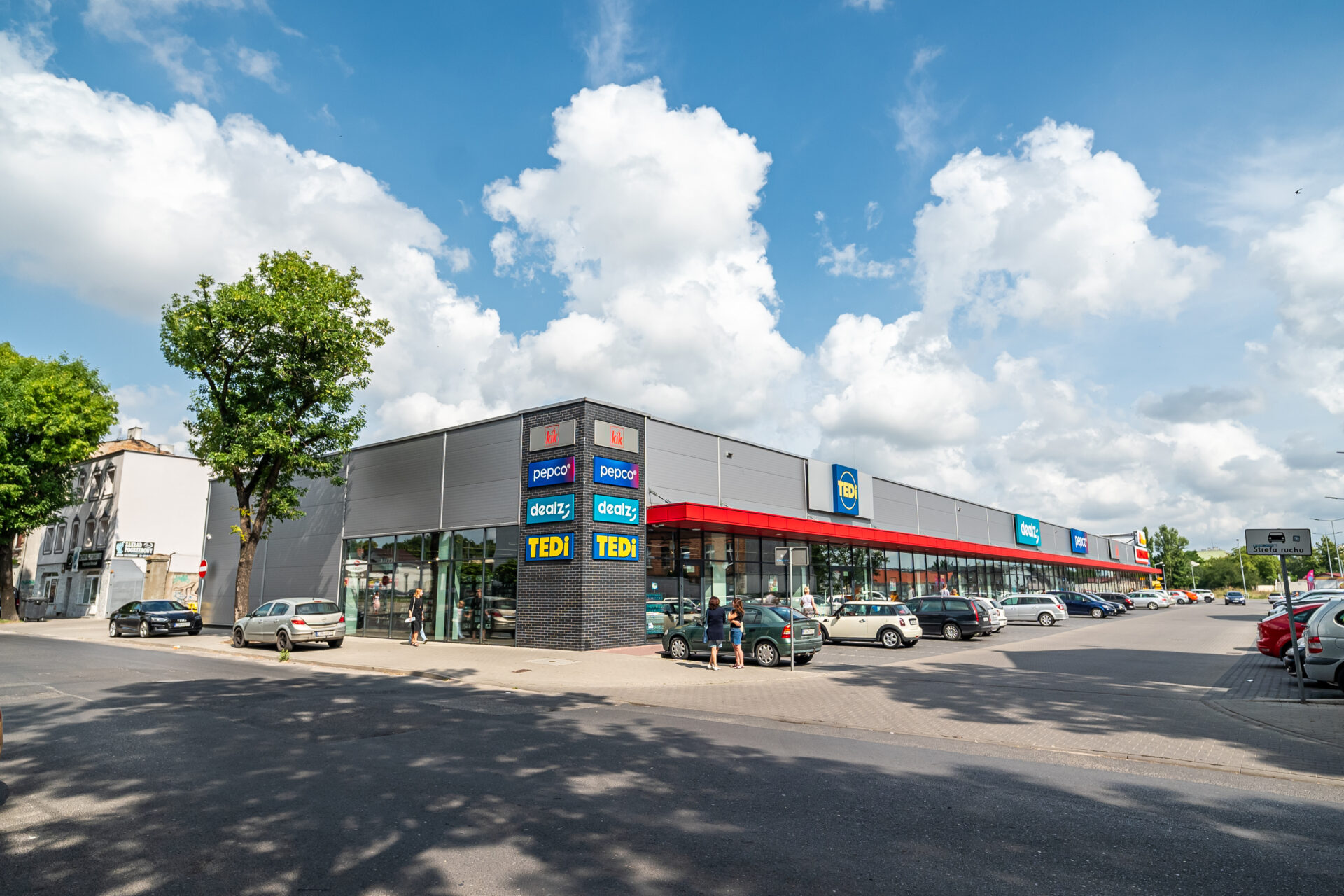Shopping centres remain the dominant retail format on the Polish market. Poland now has more than 420 shopping centres that provide 10.5 million sqm, accounting for 73% of the country’s total retail stock. Despite this, other retail formats continue to grow at a pace, including standalone warehouses, with recent openings comprising Agata’s furniture stores and schemes opened by Castorama, Leroy Merlin and Selgros. Poland’s retail park sector is also expanding, notably in the form of small-scale schemes in smaller cities and near housing estates in large urban areas. This growth is driven both by expansion plans of retailers with business models suited to smaller purchasing potential markets and by retail space supply delivered by retail park developers such as Dekada, Real2B, Napollo Group, TREI, Adept Investment, Saller, Immofinanz and DL Invest Group.
Small retail parks are frequently the only modern retail destinations in smaller cities. This format has recently seen a new trend emerge: adding a small-scale retail park to the usually only shopping centre dominating the local market. Such projects have been completed in Wołomin, where a small retail park was developed close to Galeria Wołomin, and in Ostrołęka, which saw the opening of a retail park near Galeria Bursztynowa. Development activity is also picking up on the market of outlet centres. Examples include the Smart Outlet Center in Bydgoszcz (opened on 26 May 2018), Outlet Park Szczecin (extension) and the Silesia Outlet in Gliwice (under construction). In addition, the Glinki shopping centre in Bydgoszcz will be remodelled into the Metropolitan Outlet.
Retail space in office buildings is also on the rise with a growing trend observed in recent years for adding non-office functions, including retail, to office schemes. Not so long ago, canteens and common areas used to be the only non-office space in new office buildings. Retail space now accounts for several or over a dozen per cent of all commercial space delivered through recent completions or projects underway. Canteens in new office buildings are now complemented by convenience retail that usually comprises small food stores, kiosks, health & beauty stores, basic services such as a dry-cleaner, a hairdresser, a beautician, a bank, a flower shop, a chain café, at least one restaurant from the QSR (quick service restaurant) segment, and some unique F&B concepts. Fitness clubs, including the largest operating formats, are also increasingly expanding into new office buildings. Unique formats are also being developed such as Poland’s biggest Organic Market store in Q22 or Poland’s first G. Bar beauty parlour to open at Proximo 2.
The near future is likely to see substantial volumes of retail space delivered through mixed-use schemes combining various commercial functions with residential and public spaces. Retail is always present there. For example, retail space accounts for more than 30% of the total commercial space at the recently opened CEDET building. Other hybrid projects in Warsaw which combine core functions with modern retailing include ArtN (retail and services will occupy nearly 40% of space), Centrum Marszałkowska, Koneser, Elektrownia Powiśle, Europejski Hotel and Varso. Such hybrid projects underway in regional cities comprise Hanza Tower in Szczecin and Monopolis in Łódź, the latter having a nearly 20% share of locally unique retail in total space.
Another leading retail sector outside shopping centres is online retailing which is recording a rapid growth both in retail sales and its penetration rate (share of total retail sales). Planet Retail estimates that Poland’s online retail sales topped PLN 43bn in 2017, which represented a 19% increase on the previous year, whilst this year’s figure is expected to reach PLN 50bn. In 2020, online retail sales are likely to hit PLN 70bn.
At year-end 2017, online retailing’s penetration rate stood at 7.5% compared to just under 5% three years earlier. Despite this rapid growth, this figure is still twice lower than in Germany and nearly three times lower than in the United Kingdom, which bodes well for this sector’s expansion.
Polish high streets face the biggest challenges. They continue to attract F&B operators, including restaurants, cafés, bars and chain restaurants. High streets are also seeing strong interest of retailers, including luxury brands, that would like to enter the Polish market through unique high street locations rather than shopping centres. However, it takes time to decide whether to build a high street presence also due to limited availability of prime locations meeting excessively high requirements of such tenants: a suitable store size, a large store front guaranteeing good exposure, a transparent ownership structure and – last but not least – the location with a concentration of similar brands. Banks have drastically reduced expansion in high streets in recent years and some even closed a large number of branches. Instead, recent years have seen a large increase in openings of convenience stores, health & beauty stores, cafés and baker’s shops (Gorąco Polecam Nowakowski, Costa Coffee, Green Caffe Nero and Cukiernia Sowa). Areas with a large concentration of F&B outlets include Nowogrodzka, Żurawia and Wspólna streets, as well as Zbawiciela and Grzybowski squares and their environs. Warsaw residents increasingly enjoy going out and shopping centres are no longer the main and only leisure destination. This trend is benefiting high streets.
Both Warsaw and other large European cities have some prestigious locations along high streets or urban spaces. In Warsaw these include Trzech Krzyży Square, a section of Mokotowska Street, and Krakowskie Przedmieście near the renovated Europejski Hotel. Other sections of these streets could well differ and serve other functions. Building owners are free to decide whom they let business premises, making it difficult to create a consistent high street character. The market of professional commercial high street space leasing is just beginning to take shape. Some once-prestigious high streets such as Warsaw’s Chmielna Street or part of Mokotowska Street, have lost their appeal. Due to historical and zoning factors, Warsaw features a different distribution and diversification of retail space compared to other European cities. While retail is concentrated along major thoroughfares in big European cities, it is largely dispersed across Warsaw.
Development of Polish high streets will gather pace going forward with a growing number of both prestigious brands and popular fashion retailers, as well as F&B and leisure spaces. This is already taking place in Żurawia Street, Zbawiciela Square, and the Cracow and Wrocław market squares. This growth could be hampered by the historic nature of some streets or buildings requiring consultations with heritage conservation officers, but this holds true for most European cities. The outlook for this sector of the retail market is bright because demand for new retail and entertainment forms other than shopping centres is growing by the year. This is evidenced by the strong interest in schemes such as Warsaw’s Hala Koszyki which tend to operate as lifestyle, service and F&B destinations with people spending time mainly in cafés or restaurants.
Authors: Daria Kotarska, Senior Advisor, Retail Department, Cresa Poland Magdalena Sadal, Head of Retail Research & Advisory, Cresa Poland







